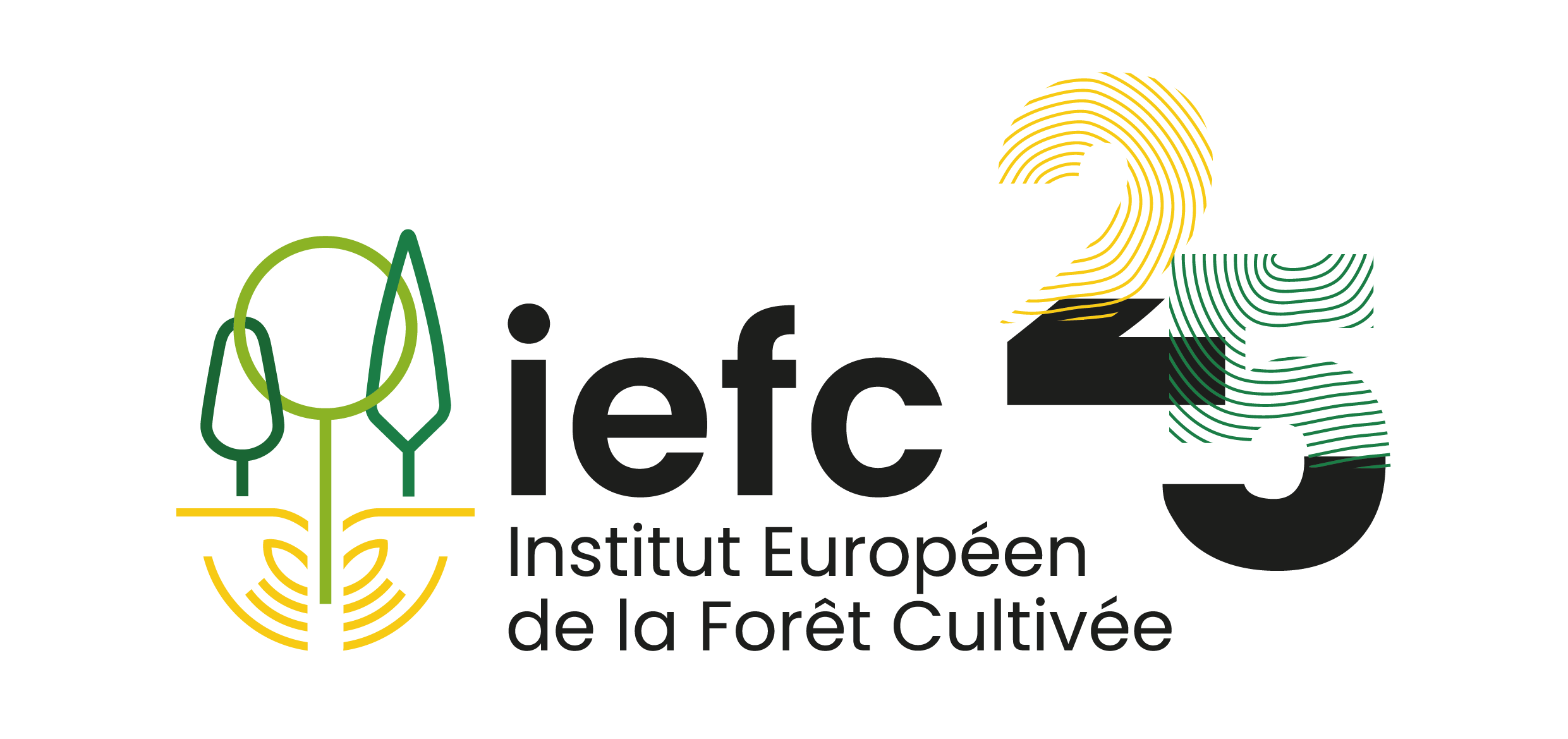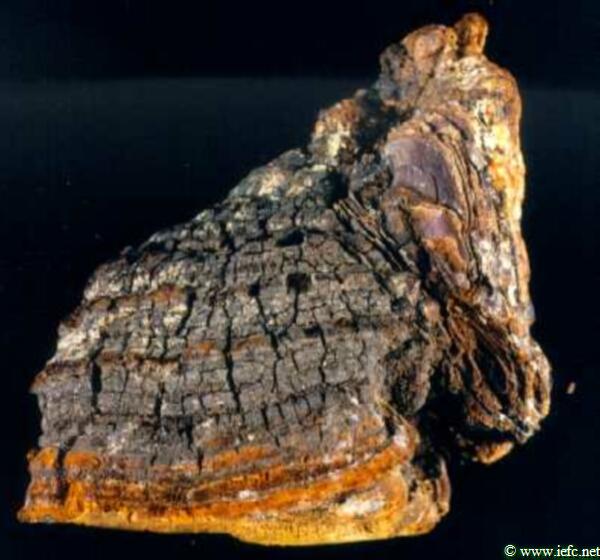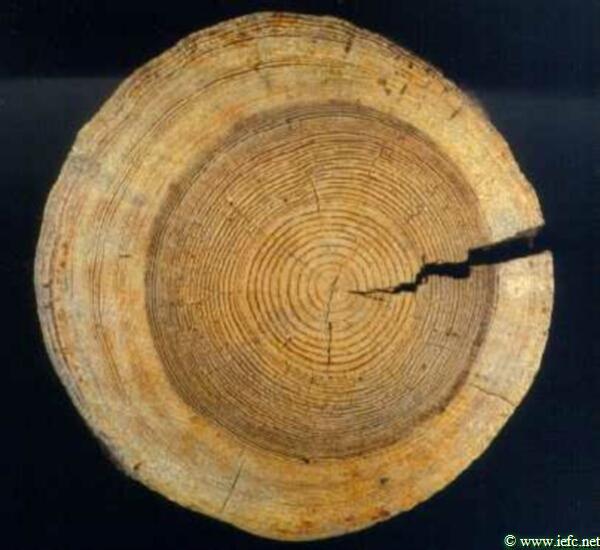Red ring rot
Phellinus pini (Basidiomycota, Aphyllophorales).
Synonyms: Fomes pini, Trametes pini, Xanthocrous pini.
Conk rot, white pocket rot, red heart.
Host tree
Pines (Pinus), hemlocks (Tsuga), spruces (Picea), larch (Larix) and Douglas-fir (Pseudotsuga menziesii), Red cedar (Juniperus) and Western red cedar (Thuja plicata).
Identification
- Trees exhibit poor growth, chlorotic leaves and sometimes dieback of the top.
- Presence of perennial fruiting bodies (carpophores) on the trunk or branches. Fruiting bodies vary widely in thickness and size and are broadly attached, with a rather sharp to obtuse margin, and are woody hard. The underside is yellowish-brown to greyish-brown with irregularly shaped pores (Photo 1 and. 2).
- Infected heartwood is often light red to reddish brown (Photo 3).
- Later on, small lens-shaped white pockets appear in the decayed wood.
- The decay extends in lines along the annual rings and forms concentric rings (Photo 4).
Damage
- Timber quality is reduced. The decayed wood is often highly resinous.
- Decay columns commonly extend 10 meters or more, rendering the entire trunk useless for lumber.
- Infected trees can survive many years, but the decay predisposes the trees to breakage.
Biology
- The spores (basidiospores) are dispersed by wind, and enter the trunk through wounds all over the year. Dispersal of basidiospores is at its maximum in spring and autumn.
- The fungus grows up slowly in the heartwood, (only 5-10 cm /year).
Risk factors
- Older trees are more susceptible to damage by this fungus.
Pest management
Preventive measurements
- Avoidance of wounding during silvicultural operations.
- In managed forests, harvest should take place at a relatively young age.
- On trees with ornamental value, the wounds must be protected with mastic such as copper-based formulations.
Curative control
- Biological control with Ascocoryne sarcoides is applied successfully in Canada, but this product is not registered in Spain, Portugal or France.




